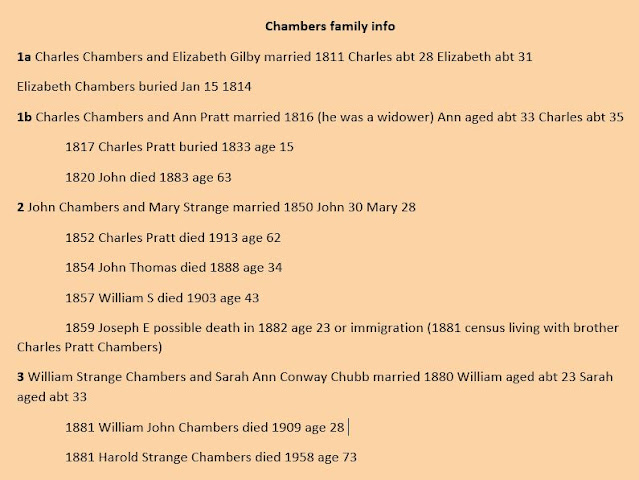Not all trees have strong roots
Sometimes it's good to look at the information you have in different ways. I recently read a book about demography, The Human Tide: How Population Shaped the Modern World, and thought that I would see how my Chambers family fit into the population trends outlined.
The British population started to grow due to earlier marriages which allowed for more births per woman. At the same time, people started to live longer and infant mortality decreased. The key factors I will be looking for will be age at marriage which by the 1850s was 23 as opposed to the average of 26 of the early 1700s and a birth rate that fits in with the rate of 6 births per woman by about 1800 and was still the norm, from what I can make out, until about the mid 1870s.
So the parameters to look for in my Chambers family data are:
- age of marriage close to 23 after 1850
- birth rate of about 6 per woman after 1800
This is the information I have so far:
Looking for "age of marriage close to 23 after 1850", there was only one person who married at the age of 23. That was William Strange Chambers in 1880. Not only was that the male of the couple which doesn't affect fertility rate per woman, it was also later than the 1850s. Apart from that most of the other family members getting married were between 28 and 33. That didn't change for this family line from the early 1800s to the late 1800s.
As for "birth rate of about 6 per woman after 1800", there was a slight up tick in the number of children born to John Chambers and Mary Strange who married in 1850 and had 4 children which compares to the average of 2 for the earlier and later couples. This was not up to the average for the time of 6 children per woman.
What was obvious from the data shown, was the young age at which many of the family died. So, while this family line didn't fit with the norms which were sited in the book, it did point to some further lines for study. Checking through the information which I had on hand for this family reminded me of what I have and what information I need to see if I can take the family back further. It also gave me ideas about different ways to use this and other data that I have gathered. It goes to show that it can pay to manipulate the data in different ways to show gaps and possible avenues of research.
Sources:
Morland, Paul. The Human Tide: How Population Shaped the Modern World. Hatchette Book Group, New York, NY 2019


No comments:
Post a Comment